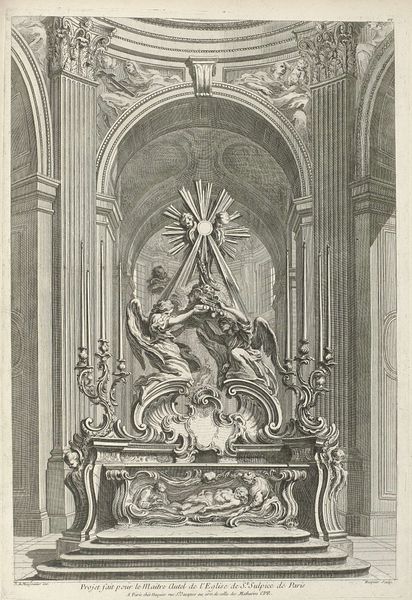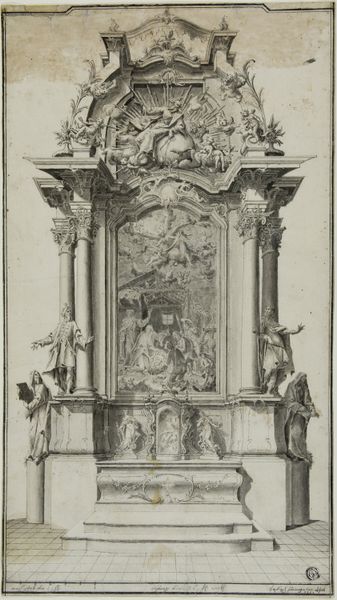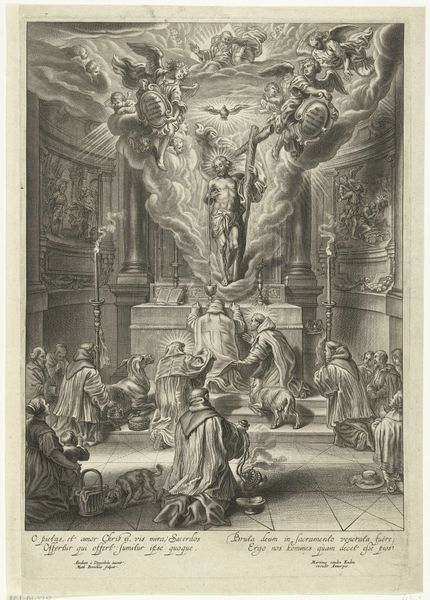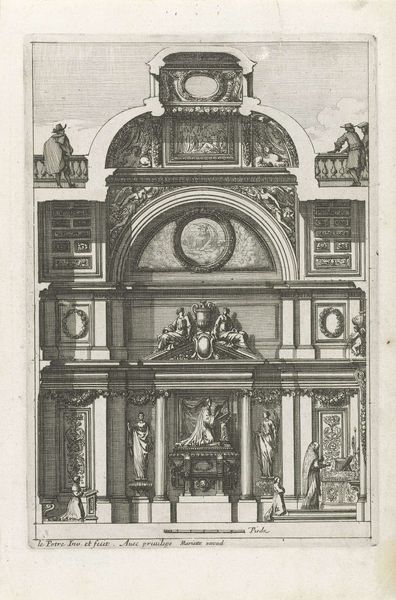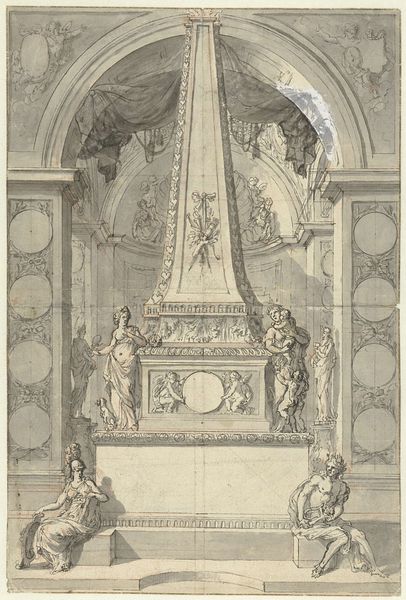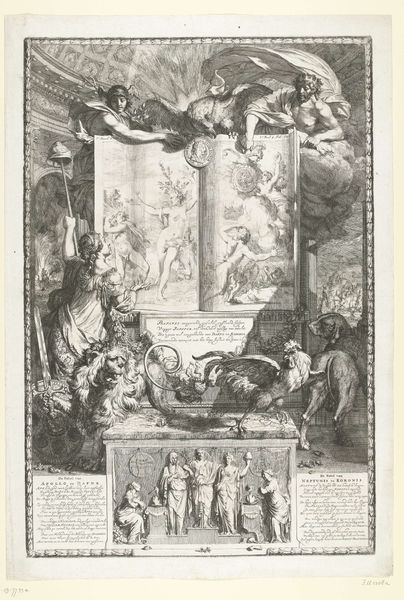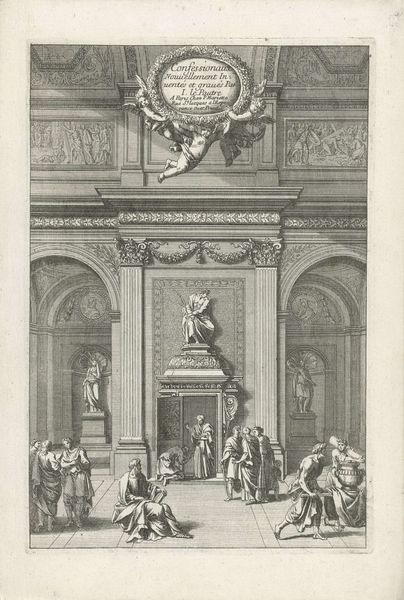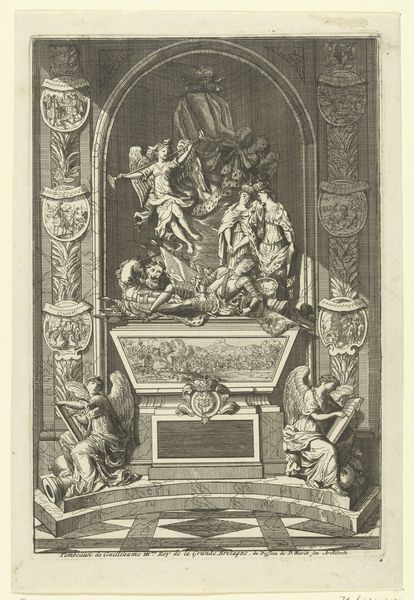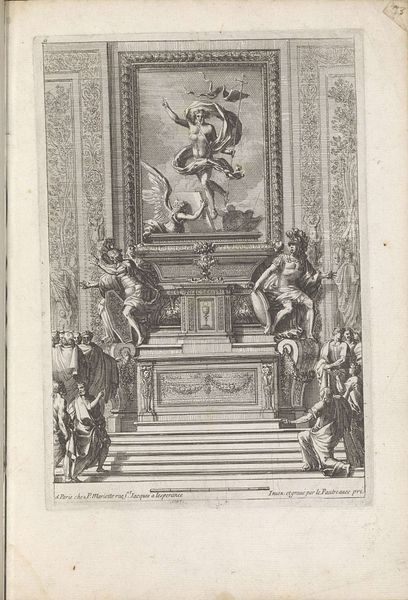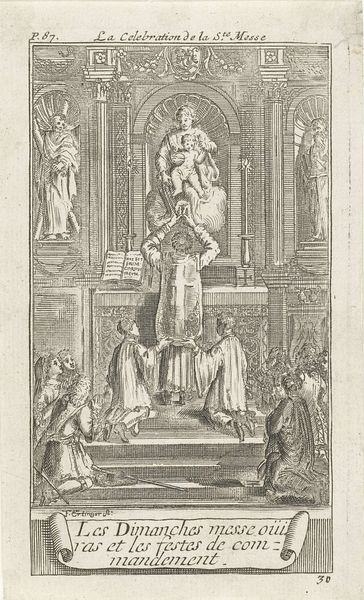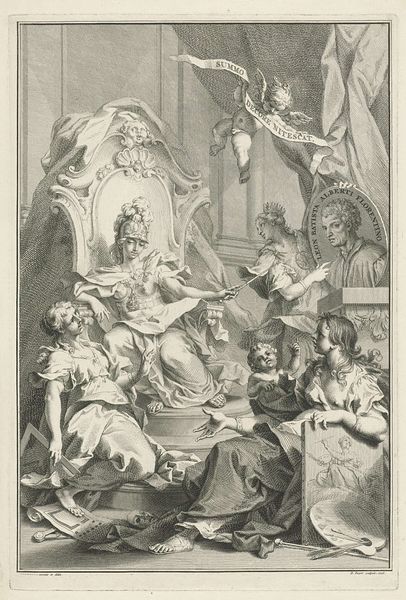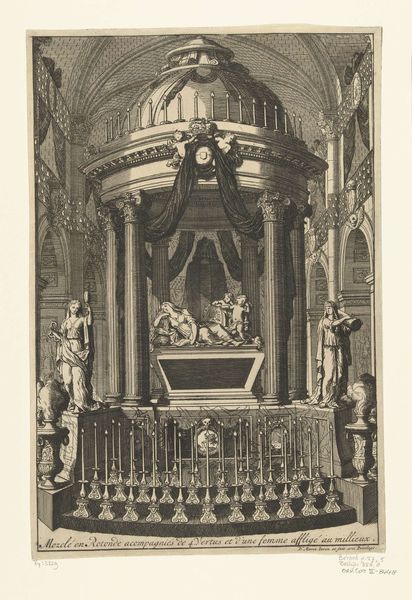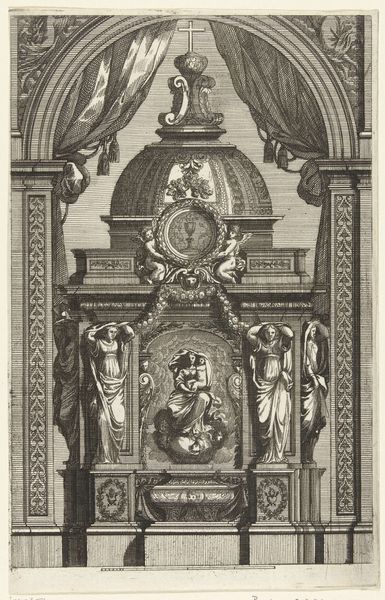
print, engraving, architecture
#
baroque
# print
#
line
#
history-painting
#
engraving
#
architecture
Dimensions: height 697 mm, width 479 mm
Copyright: Rijks Museum: Open Domain
Curator: The engraving before us, crafted in 1692, depicts "Heilige Stoel van Petrus in de Sint Pieter," or the Chair of Saint Peter in the Vatican. It was etched by Jacques Blondeau. It immediately struck me with the contrast and hierarchy. Editor: It’s intense, almost theatrical. The upward surge, all those swirling figures, seems meant to overwhelm. What story is Blondeau trying to etch here? Curator: He captures Bernini’s sculptural ensemble. In many cultures, chairs and thrones often are more than mere furniture; they symbolize power and authority, but what I find captivating is how Bernini infused that seat, believed to have been used by St. Peter himself, with celestial validation. Note how Blondeau captured the Holy Spirit, appearing to sanctify it. Editor: It’s the papacy made visible, then replicated through the machinery of print. Think about the public who may have encountered this print. Far more than saw the actual monument. Curator: Precisely. The print functions as a political object. Look at how Baroque drama is used here as the primary message in religious dissemination, offering believers visual cues with which to remember key ideas: St. Peter as the founder of the Church. Editor: But also, isn't it subtly about the Pope as heir of St. Peter? I think it uses established imagery—divine light, the swirling cloud of witnesses – to convey legitimacy and the enduring presence of the Church, very savvy politics in art making, for and of its time. It must be understood in the context of the Counter-Reformation, during a period marked by religious schisms and realignments of power. Curator: Exactly, art employed as a vital strategy, helping viewers see the papacy as not just powerful, but divinely sanctioned. This symbolism strengthens both political control and visual persuasion through architecture. The radiant light would give adherents a clear iconographic message to read. Editor: So we're seeing how even an engraving functions within specific social structures, to reiterate central claims of power... It really speaks to art’s entanglement with institutional objectives. Fascinating. Curator: A perfect case for unraveling our assumptions, as always. Every detail in Baroque style can signify something powerful if decoded accordingly, right?
Comments
No comments
Be the first to comment and join the conversation on the ultimate creative platform.
